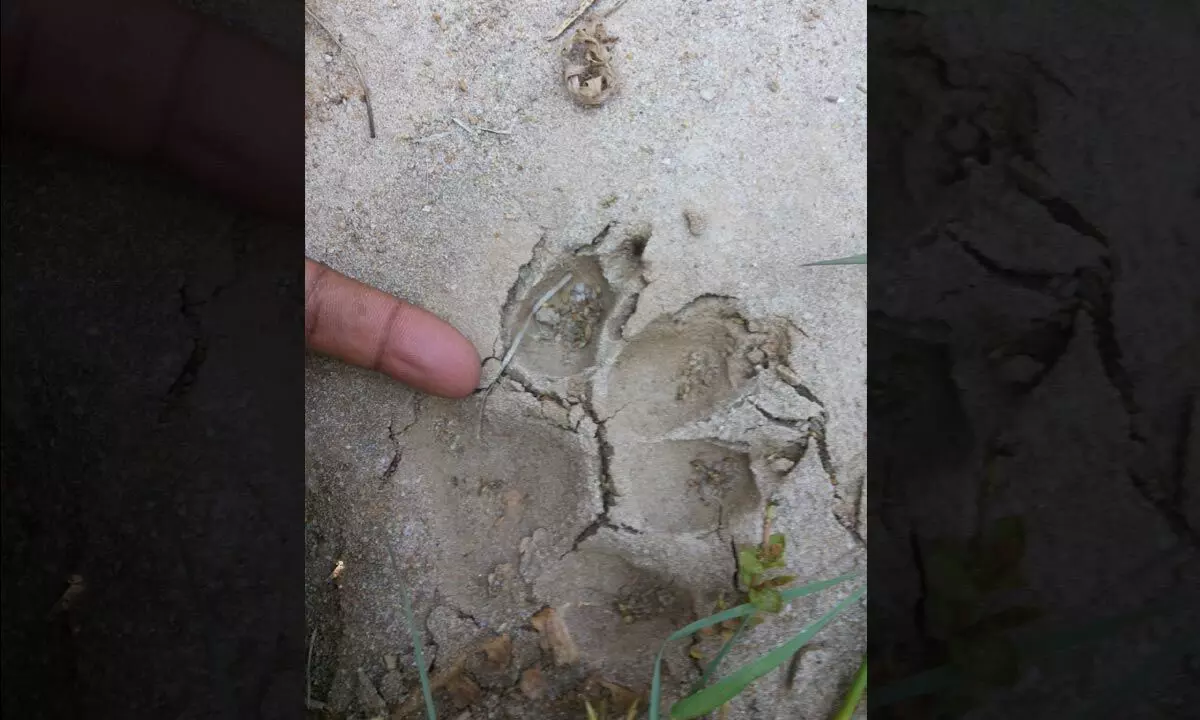Rare Species Of Neelagiri Kaduva Discovered in South Indian Forests

Rare Species Of Neelagiri Kaduva Discovered in South Indian Forests
- Neelagiri Kaduva was Discovered and Proved Scientifically by Scientist and Conservation Biologist Dijo Thomas.
- Neelagiri Kaduva has been found to still exist by Dijo Thomas in more than 15 locations in Kerala, Tamil Nadu and Karnataka in South India.
A new and rare species called the Neelagiri Kaduva is as big as a tiger and was Discovered in 3 States of South India since 2014. Neelagiri Kaduva was Discovered and Proved Scientifically by Scientist and Conservation Biologist Dijo Thomas. As an almost Prehistoric animal, it qualifies as a "Walking Fossil."
Neelagiri Kaduva (Tiger of the Blue Mountains), according to Dijo Thomas's discovery, is the common ancestor of felines and canids. It almost looks like a Tiger, but astonishingly, has the face of a dog. At the same time, Dogs are the primary prey of Neelagiri Tiger.
It is belongs to the Neelagiri Kaduva Family and is in grave danger of Total Extinction. Neelagiri Kaduva has been found to still exist by Dijo Thomas in more than 15 locations in Kerala, Tamil Nadu and Karnataka in South India. The estimated population is between 40 and 80, spread out in 15 + places in the three states of Kerala, Tamil Nadu, and Karnataka.
He searched for Neelagiri Kaduva in Andhra and Telangana Region in 2018 and 19; and understood that it once existed there, but wasn't able to confirm whether it still exists there, though we can't totally rule out the possibility ! He also met the then Chief Minister Chandrababu Naidu two times in Amravati to request his help for the Research.
Tribes have a deep understanding of the forest and have known Neelagiri Tiger for centuries! Non-Tribal residents who live close to forests have also seen it when it emerges to hunt domestic animals, particularly dogs, but nobody was interested in conducting research on this species until Dijo Thomas learned about it. After 12 years of searching, he found Neelagiri Kaduva on September 25, 2014 ! Additionally, he has spoken with more than 350 eyewitnesses in three states in South India ! He has published a few of the Eyewitness Accounts in his YouTube channels, for academic purposes.
Getting a photo of Neelagiri Kaduva is extremely difficult, due to the lesser numbers, high Migratory Nature, nocturnal behaviour, shyness of humans; and above all, High Stealth Property! The DNA Test Result of the Cub of Neelagiri Kaduva obtained in 2014, was Sabotaged by the Kerala Forest Department and have not Published the results till date.
The Scientific Proving of Neelagiri Kaduva
Despite these setbacks, Dijo decided to fight for saving one of the Rarest Species in the World. He went on to Invent a New Method called F3B-NSPM (Facts, Features, Factors etc. Based - New Species Scientifically Proving Method) to prove a Species without to Prove a New Species without Specimen, Direct Sighting, Photos, Taxonomy or DNA Tests ! He took more than 60 Facts / Variables [ like Behavior Pattern, Attacking Pattern, Hunting Pattern, Eating Habit, Eye Witness accounts,
6. Color of the Animal, Size of the animal, Shape, Pattern on body, Pug Marks, Pug Marks Size (9 cm in Thiruvananthapuram & 12 cm in Thrissur) etc. ] and more than 100 Points to Prove Neelagiri Kaduva through F3B-NSPM Method.
Dijo Thomas presented 4 Scientific Papers on Neelagiri Kaduva and the F3B-NSPM Method for the same ; in 103rd Indian Science Congress, held at University of Mysore on 07 Jan 2016 and
2 Updated Scientific Papers in 104th Indian Science Congress; held at SV University, Tirupathi in Jan 2017. He says that he is unable to publish a Paper in Science Journal as he is working all these years without any sort of funding, but will definitely Publish in Science Journals, once the Government supports him.
Meanwhile, Dijo Thomas is a Scientist, a Conservationist of Wildlife, an Environmental Activist, a Researcher of Wildlife, an Analyst of Foreign Affairs as well as Defence. He has been a Conservationist from his college days and first focused on the Research and Conservation of wild elephants, tigers, leopards, gaur, and sambar deer. Since its maiden Discovery on September 25, 2014, Neelagiri Kaduva has been the subject of his lonesome conservation efforts.
Furthermore, his other Discoveries include Raktha Athika (Indian Chupacabra), a distant Relative of Kangaroo in Thrissur District, (for which Photographs and Videos Exists), American Chupacabra and Neelagiri Cheruvan (Pogeyan of BBC Documentary "The Mountains of the Monsoon") etc.
Next Story








